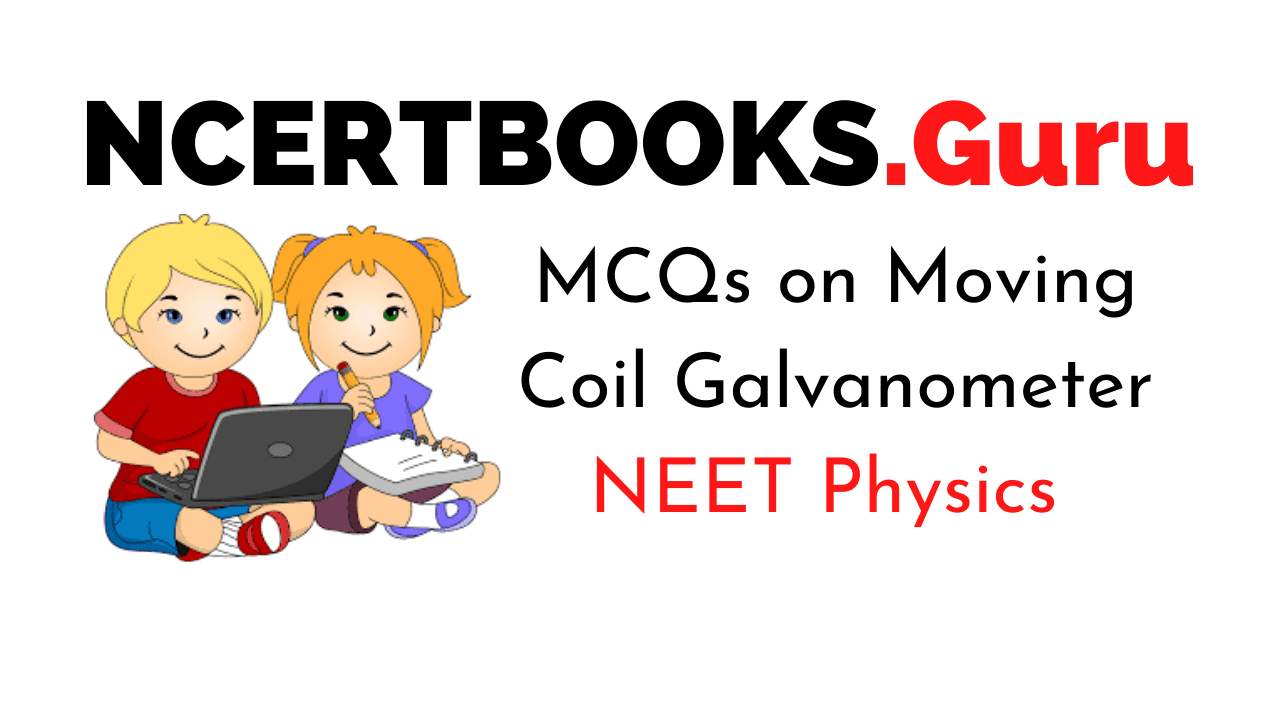NEET Physics is the scoring paper in the medical entrance examination. Here, you will discover the NEET Physics MCQ Questions for all Concepts as per the latest syllabus. Practice more on a regular basis with these NEET Physics objective questions on air pollution and improve your subject knowledge & problem-solving skills along with time management. NEET Physics Moving Coil Galvanometer Multiple Choice Questions make you feel confident in answering the question in the exam & increases your scores to high.
MCQ on Moving Coil Galvanometer
1. The deflection θ is related to the electric current I in a galvanometer by the relation
(a) I ∝ θ
(b) I ∝ tan θ
(c) I ∝ sin θ
(d) I ∝ cos θ
Answer
Answer: (a) I ∝ θ
2. A moving coil galvanometer carries a current I and the magnetic field B is radial. The coil has N number of turns and an effective area A. The torque acting on the coil of a moving coil galvanometer is given by
(a) NA2B2I
(b) NABI2
(c) NABI
(d) N2ABI
Answer
Answer: (c) NABI
3. The sensitivity of a moving coil galvanometer can be increased by decreasing
(a) The number of turns in the coil
(b) The area of the coil
(c) The magnetic field
(d) The couple per unit twist of the suspension
Answer
Answer: (d) The couple per unit twist of the suspension
4. In ballistic galvanometer, the frame on which the coil is wound is non-metallic. It is
(a) To avoid the production of induced e.m.f
(b) To avoid the production of eddy currents
(c) To increase the production of eddy currents
(d) To increase the production of induced e.m.f
Answer
Answer: (b) To avoid the production of eddy currents
5. The reason the coil is bound over the metallic frame in moving coil galvanometer is
(a) The metallic frame helps in oscillation
(b) The metallic frame helps in making steady deflection without any oscillation
(c) The metallic frame increases the magnetic field
(d) None of the above
Answer
Answer: (b) The metallic frame helps in making steady deflection without any oscillation
6. The deflection in moving coil galvanometer is
(a) Inversely proportional to the area of the coil
(b) Directly proportional to the torsional constant
(c) inversely proportional to the current flowing
(d) Directly proportional to the number of turns of the coil
Answer
Answer: (d) Directly proportional to the number of turns of the coil
7. The pole pieces of the magnet used in a pivoted coil galvanometer are
(a) Plane surfaces of a horse-shoe magnet
(b) Cylindrical surfaces of a bar magnet
(c) Plane surfaces of a bar magnet
(d) Cylindrical surfaces of a horse-shoe magnet
Answer
Answer: (d) Cylindrical surfaces of a horse-shoe magnet
8. A current-carrying rectangular coil placed in a uniform magnetic field. In which orientation will the coil rotate?
(a) In any orientation
(b) The magnetic field is parallel to the plane of the coil
(c) The magnetic field is at 450 with the plane of the coil
(d) The magnetic field is perpendicular to the plane
Answer
Answer: (d) The magnetic field is perpendicular to the plane
9. What is the shape of a magnet in moving coil galvanometer to make the radial magnetic field?
(a) Convex cylindrical magnet
(b) Horse-shoe magnet
(c) Concave cylindrical magnet
(d) None
Answer
Answer: (c) Concave cylindrical magnet
10. Phospher- bronze wire is used in suspension because it has
(a) A large couple per unit twist
(b) A small couple per unit twist
(c) Low conductivity
(d) High Sensitivity
Answer
Answer: (b) A small couple per unit twist
